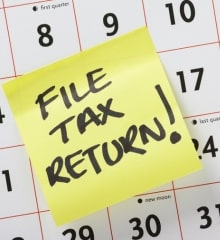What happens to a cosigner when the borrower files for bankruptcy?
Most people have the best of intentions when they ask a loved one to cosign a loan. But what happens when a well-meaning borrower can no longer afford
to make loan payments? All too often, co-signers bear the burden when a family member defaults on a debt.
It’s hard to say no when a child, grandchild, sibling, niece or nephew in need of financial help asks for assistance buying a car or taking out a mortgage.
However, few co-signers stop to really think through the risks of sharing responsibility with a debtor.
While some people are able to overcome financial obstacles to make good on loan payments, the reality is that most folks who can’t quality for a loan simply
can’t afford one. People who need help obtaining loans frequently have overwhelming debts, low-paying jobs and other financial obstacles. Unless their
situation drastically changes, odds are they won’t be able to afford repaying the loan.
When a debtor defaults, co-signers are on the hook for the unpaid debt, plus late fees and collection costs. If you fail to pay the remaining debt in full,
you could suffer credit damage, be sued by creditors and even have your wages garnished. And if you secured a loan with property, your personal assets could also be at risk.
So what happens when you’re stuck with someone else’s debt – debt that you can’t afford to pay? Or maybe you can make payments, but not without doing serious harm to your own finances?
Getting Out of a Debt You Cosigned
While ignoring the problem won’t make it go away, in some cases you may be able to buy time by requesting that the lender put a forbearance in place to allow
you – or better yet, the debtor – to catch up on payments. Another possibility is for the debtor to refinance the loan, although many lenders will be hesitant
to negotiate with borrowers who have demonstrated difficulty in making payments.
When it becomes clear that the borrower isn’t going to pay off their debt, filing for bankruptcy, or encouraging the borrower to file, may be your best bet.
Bankruptcy stops the overwhelming bills and creditor harassment and provides an opportunity to begin
rebuilding credit for a fresh financial start.
In cases involving a cosigner, it’s especially important to seek professional counsel when filing bankruptcy. Chapter 7, for example, has the power to quickly
wipe out debts in entirety. However, it doesn’t offer protection for cosigners, leaving their assets at risk.
Chapter 13 bankruptcy, on the other hand, protects the assets of both parties with an automatic stay and a codebtor stay. So long as payments are made
under the court-approved repayment plan, creditors are prohibited from going after the people responsible for the debt.
When a cosigner files bankruptcy to eliminate his or her own debts, the obligation to cover cosigned loans is also wiped out. Of course, one downside to taking
this route is that lenders won’t look too favorably on a borrower whose cosigner has filed bankruptcy Then again, if the borrower hasn’t been making payments,
they weren’t exactly in good standing to begin with.
There’s no easy solution when a borrower defaults on a loan you’ve cosigned, which is why financial experts advise so adamantly against cosigning loans.
But when you’ve already been painted into a corner by a borrower, your goal should be to extricate yourself from the situation with the least amount of damage.
In most cases, bankruptcy is the fastest and most effective way to stop the bleeding and get yourself back on the path to financial security.
If you have questions about bankruptcy or how it will impact your personal financial situation, don’t hesitate to contact our bankruptcy attorneys for a free
consultation. Call us or visit us online to schedule your complimentary one-on-one debt evaluation with an experienced bankruptcy lawyer today.
Resources:
You Cosigned a Loan, They Defaulted. What Now? by Geoff Williams, U.S. News & World Report


